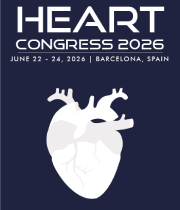Cardiac Anatomy
Cardiac anatomy refers to the intricate structure and organization of the heart, a vital organ responsible for pumping blood throughout the circulatory system. Comprising four chambers—the left and right atria and ventricles—this remarkable organ is a complex network of muscles, valves, and blood vessels. The heart's anatomy plays a crucial role in maintaining circulation and ensuring the efficient delivery of oxygen and nutrients to the body's tissues. The atria act as receiving chambers, while the ventricles pump blood out of the heart. Intricate networks of coronary arteries and veins supply the heart muscle itself, underscoring the importance of maintaining a healthy cardiac anatomy for overall cardiovascular well-being. Understanding the intricacies of cardiac anatomy is fundamental in diagnosing and treating various cardiovascular conditions, empowering healthcare professionals to provide targeted and effective care for individuals seeking to maintain heart health.

Shuping Zhong
University of Southern California, United States
Ahdy Wadie Helmy
Indiana University School of Medicine, United States
Federico Benetti
Benetti Foundation, Argentina
Ishan Abdullah
George Washington University School of Medicine and Health Sciences, United States
Sana Tariq
Manchester University NHS Foundation Trust, United Kingdom
Achi Kamaraj
Royal Brisbane and Women’s Hospital, Austria




Title : Historical evolution from OPCAB to MIDCAB to mini OPCAB surgical technique and results
Federico Benetti, Benetti Foundation, Argentina
Title : Fats of Life, the skinny on statins and beyond !
Ahdy Wadie Helmy, Indiana University School of Medicine, United States
Title : Novel ways of cardiovascular risk assessment
Syed Raza, Awali Hospital, Bahrain
Title : Study of pathological cardiac hypertrophy regression
Shuping Zhong, University of Southern California, United States
Title : Personalized and Precision Medicine (PPM) and PPN-guided cardiology practice as a unique model via translational applications and upgraded business modeling to secure human healthcare, wellness and biosafety
Sergey Suchkov, N. D. Zelinskii Institute for Organic Chemistry of the Russian Academy of Sciences, Russian Federation
Title : Atypical takotsubo cardiomyopathy presenting as st-elevation myocardial infarction
Sana Tariq, Manchester University NHS Foundation Trust, United Kingdom